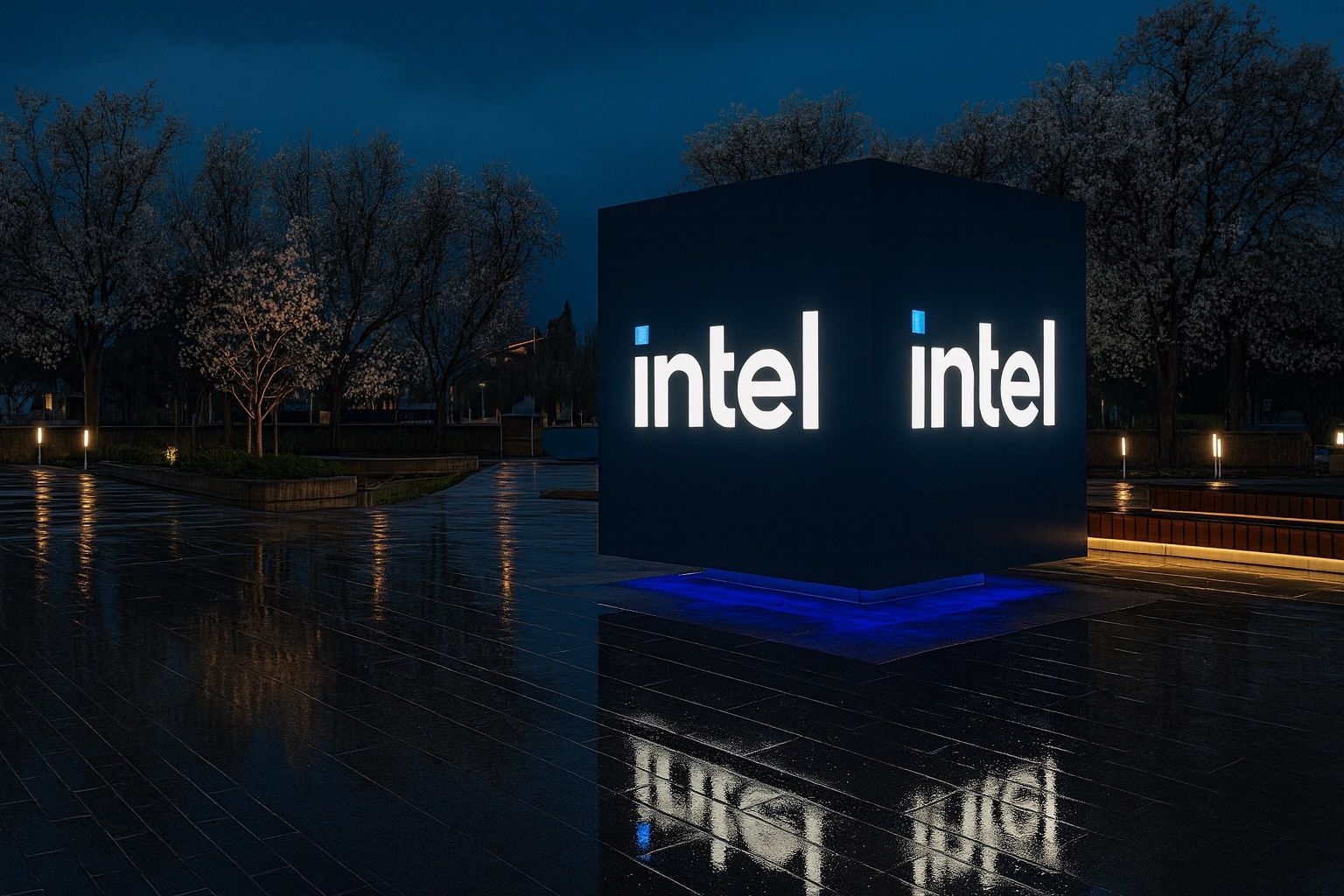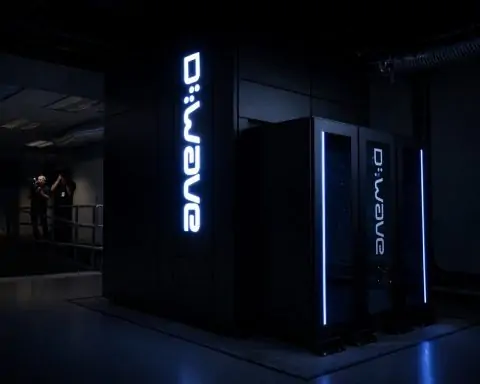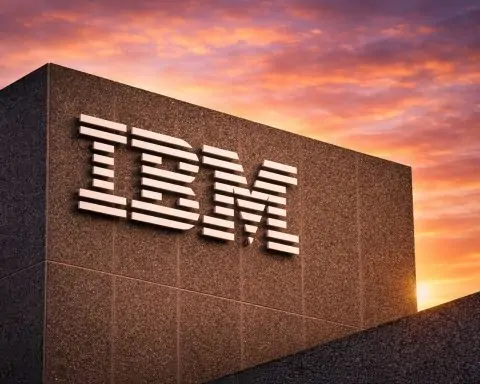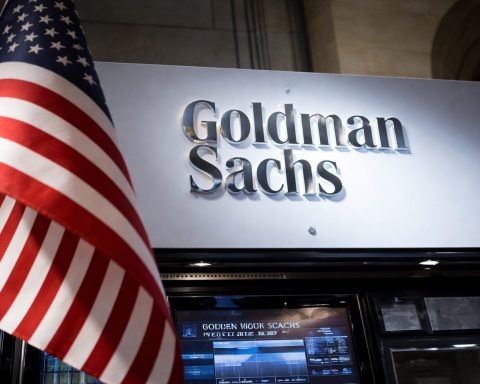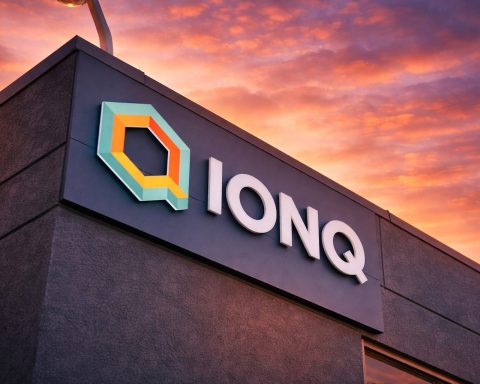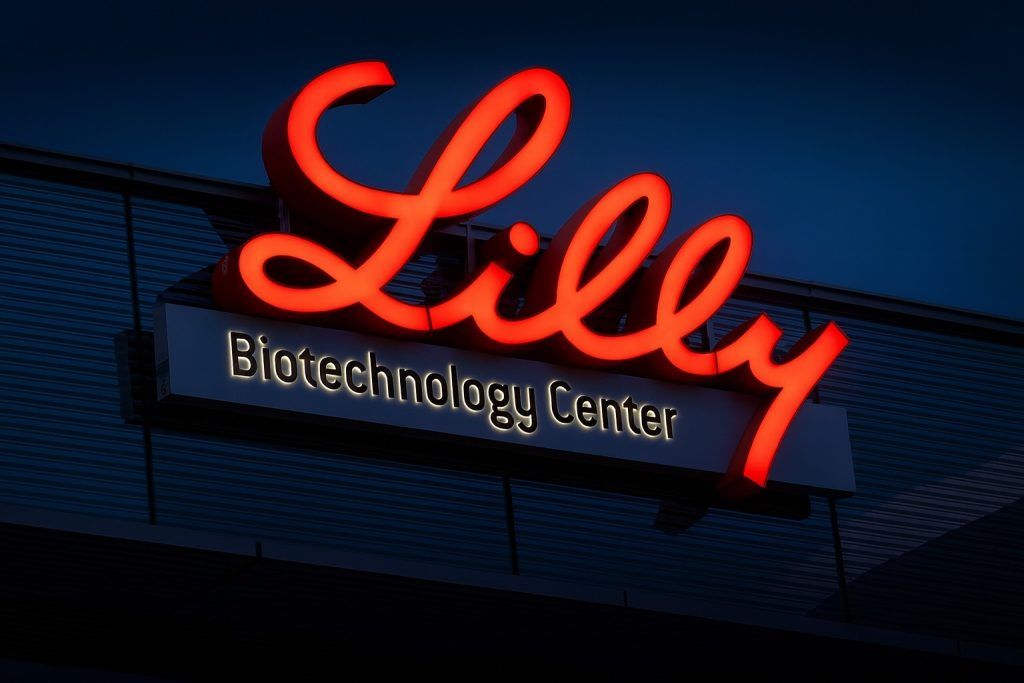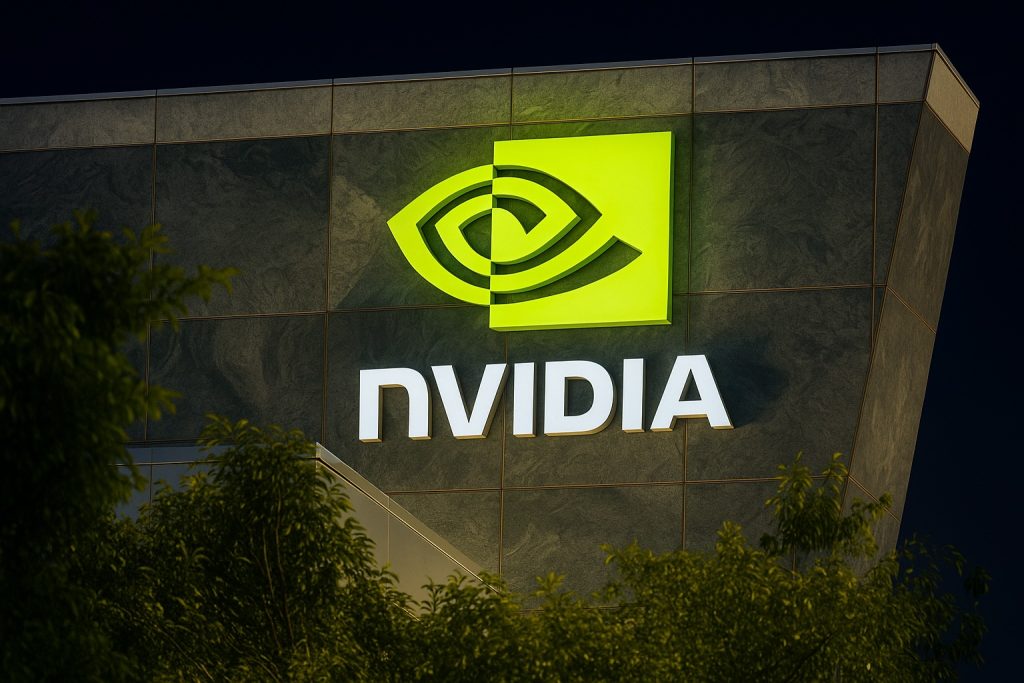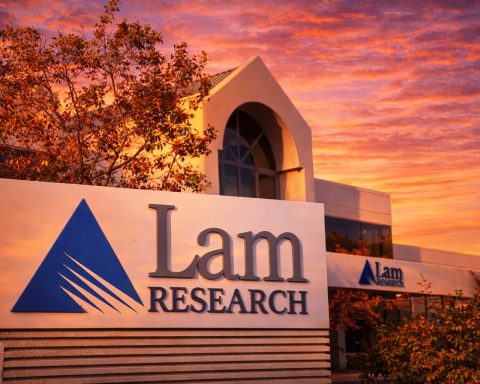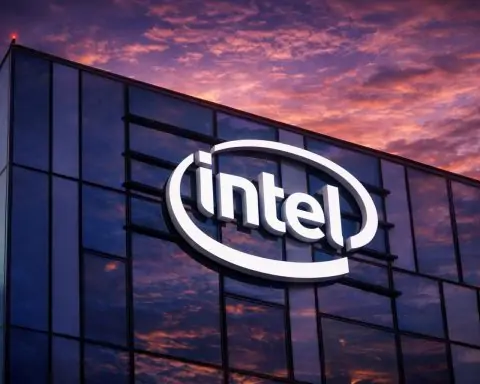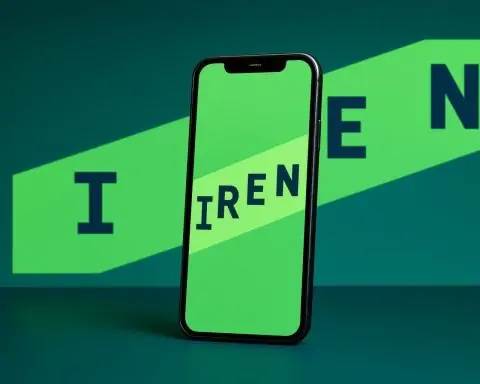Intel Corporation (INTC) has been one of 2025’s most talked‑about semiconductor stocks. After years of delays and sliding market share, the 2025 rally has been driven by a combination of massive government and corporate investments, rumours of new strategic customers, and hope that a leaner, AI‑focused Intel can eventually compete with rivals. INTC finished Oct 3 2025 at $36.73, near its 52‑week high of $38.08 [1] [2], representing a year‑to‑date gain of roughly 70 %. Investor enthusiasm stems from the U.S. government converting CHIPS Act subsidies into a ~10 % equity stake, Nvidia’s US$5 billion investment, rumours of an AMD foundry deal and potential Apple support, and the arrival of veteran chip investor Lip‑Bu Tan as CEO. Yet the optimism is tempered by Intel’s ongoing losses, manufacturing challenges, and analyst skepticism—average 12‑month price targets are roughly US$26, implying downside from current levels [3].
INTC Stock Performance and Market Behaviour
Quote page metrics
- Closing price and after‑hours: On Oct 3 2025, INTC closed at US$36.73 and remained flat in after‑hours trading [4]. Yahoo Finance’s quote page shows the stock opened at 37.96, with a previous close of 37.30 and day’s range of 36.45–38.08 [5]. Its 52‑week range is 17.67–38.08, reflecting the remarkable 2025 rally [6].
- Valuation metrics: With a market cap of about US$175 billion, Intel trades at a significant discount to rivals AMD and Nvidia. The quote page lists a beta of 1.33, negative EPS of –4.77 due to ongoing losses, and a forward price target of $25.72 [7].
- Trading volumes: Daily volume on Oct 3 reached 124.7 million shares, slightly above the 117.9 million average [8], highlighting continued heavy trading.
Technical picture
Technical analysis remains mixed. Traders at The Tradable note that INTC’s 50‑day (US$22.86) and 200‑day (US$21.70) moving averages are acting as support; the stock is forming a base around US$24.49, with RSI at 57.73 and positive MACD momentum [9]. A separate article warns the stock is approaching a long‑term resistance zone around US$40–42 after a 70 % rebound; breaking above could target US$49, but failure could send it back to US$32 or even US$24 [10].
Volatility and sentiment
INTC’s rally has been volatile. Finviz notes that the stock has seen 36 moves greater than 5 % over the past year and described the rally after rumors of an AMD deal as “extremely volatile” [11]. Shares jumped nearly 4 % on Oct 2 after Semafor reported that Intel and AMD were in early talks for AMD to use Intel’s foundry services [12]. However, after a brief surge to $37.33 (a new 52‑week high) the gains cooled as Deutsche Bank reiterated a Hold rating with a $30 price target, prompting profit‑taking [13]. Overall, INTC has risen roughly 85 % year‑to‑date [14], though long‑term investors remain underwater relative to pre‑2021 highs [15].
Recent News and Developments (Late Sept – Oct 6 2025)
Government stake and national security implications
- U.S. government converts CHIPS Act grants into equity: In late August, President Donald Trump announced that the government would purchase a 9.9 % stake in Intel for US$8.9 billion at $20.47 per share [16]. The investment, effectively turning CHIPS Act subsidies into ownership, aims to ensure a domestic champion capable of producing advanced chips. Analysts view it as a vote of confidence but worry about political interference and Intel’s execution risks [17].
- Potential downside for international sales: Intel warned in an SEC filing that a U.S. government stake could hurt sales overseas and subject it to foreign regulations or restrictions [18]. CEO Lip‑Bu Tan said he did not need the grant but welcomed the government as a shareholder [19].
- Political controversy: The Wong MNC Center notes that the stake has politicized Intel’s operations; some critics see it as national security overreach. The think‑tank points out that foreign governments may view U.S. ownership as a security risk and could retaliate [20].
Strategic partnerships and rumored deals
- Nvidia investment and AI collaboration: Nvidia invested US$5 billion for roughly a 4 % stake in Intel and agreed to co‑develop custom processors that combine Intel CPUs and Nvidia GPUs [21]. Analysts at ts2.tech say the partnership gives Intel much‑needed credibility and offers Nvidia diversification away from Taiwan‑based TSMC [22].
- SoftBank and Apple interests: SoftBank bought US$2 billion of Intel stock earlier in 2025 [23]. Rumors circulated in late September that Apple may invest or become a foundry customer; the speculation alone pushed INTC shares to a new high, though analysts cautioned that talks were preliminary [24]. ts2.tech notes that Apple wants to diversify beyond TSMC, but some analysts doubt it would rely on Intel because Intel still trails in manufacturing technology [25].
- AMD foundry talks: Multiple sources reported that AMD is in early discussions to use Intel’s foundry services [26] [27]. Such a deal would provide AMD a U.S. manufacturing option amid geopolitical risks and validate Intel’s foundry ambitions. As of Oct 6 there was no final agreement, but the speculation added fuel to the rally.
Product developments and technology roadmap
- Panther Lake CPU unveiling: Intel plans to unveil its next‑generation Panther Lake architecture on Oct 9 2025. According to TweakTown, Panther Lake uses a refined hybrid design (P‑cores/E‑cores), improves efficiency and battery life, and will integrate Intel’s 18A process for the compute die with TSMC’s N3E node for its Xe3 GPU [28]. Intel executive Jim Johnson said it offers improved throughput and capabilities while maintaining battery life [29]. The architecture will underpin next‑generation laptop chips and could be central to Intel’s AI ambitions.
- Manufacturing challenges: Reuters reported that Intel’s much‑hyped 18A process, slated for its “Panther Lake” chips, has poor yields; only a small percentage of chips meet specifications [30]. The company may need to sell at low margins or even abandon leading‑edge manufacturing if yields don’t improve [31]. This underscores why Intel is partnering with TSMC (e.g., using its N3E process for GPUs) and why some investors remain skeptical.
Financial results and cost cutting
- Quarterly results: Intel’s Q2 2025 revenues were US$12.9 billion, flat year‑over‑year and beating estimates. However, margins fell below 30 %, and the company remained unprofitable [32]. Guidance projected a slight uptick in Q3 revenue but deeper losses [33]. Analysts expect profitability no earlier than 2026 [34].
- Massive cost reductions: New CEO Lip‑Bu Tan, appointed in early 2025, has slashed overhead and staff, cutting more than 20 % of employees and targeting roughly 75,000 workers by year‑end [35]. He has paused or slowed construction of new fabs in Ohio, Germany and Poland to save cash, focusing investment on high‑return projects [36]. Tan emphasises “no more blank checks” and aims for disciplined capacity expansion [37].
Industry dynamics
- TSMC dominance and geopolitical risk: TSMC controls over 90 % of advanced semiconductor production; U.S. fabless giants such as Apple, Nvidia and Qualcomm treat Intel as an “insurance policy” in case TSMC supply is disrupted by geopolitical events. Analyst Ben Bajarin told WCCFTech that companies prefer TSMC because it best meets their needs, but they are partnering with Intel to hedge against supply shocks; Intel must improve its 18A and 14A processes to become a viable alternative [38].
- U.S. vs Asia manufacturing race: ts2.tech notes that Intel’s market cap is still half that of AMD and just 3 % of Nvidia’s despite the rally [39]. The site compares valuations: Nvidia trades at ~50× earnings, AMD at ~94×, while Intel’s multiple is near zero because it is loss‑making [40]. The U.S. government stake, along with Nvidia’s investment, positions Intel as a national champion, while TSMC continues to dominate advanced nodes and is building plants in Arizona and Germany [41].
- Risks of government ownership: Reuters warns that the U.S. stake may deter international customers and expose Intel to foreign regulations [42]. The Wong MNC Center notes that foreign governments may view U.S. ownership as a security risk, potentially restricting Intel’s sales in China and other markets [43].
Commentary from Experts and Analysts
- Jim Cramer (CNBC/Insider Monkey): Cramer hailed Intel’s comeback under Lip‑Bu Tan, calling him a “legendary semiconductor investor” and noting that Tan secured US$8.9 billion from the government for a 10 % stake and raised US$2 billion from SoftBank and US$5 billion from Nvidia [44]. He said these moves sparked a roughly 50 % rally in the last quarter [45].
- MarketBeat consensus: As of Oct 5 2025, 32 analysts on MarketBeat assigned INTC an average 12‑month price target of US$26.19 (high US$43; low US$14), implying a –28.9 % downside from the Oct 5 price of $36.83 [46]. The consensus rating was Reduce with 2 Buy, 24 Hold and 6 Sell ratings [47].
- ts2.tech analysts: Analysts at ts2.tech are cautiously optimistic. They note that Intel stock is up ~47 % from its lows thanks to the government and Nvidia investments but caution that Intel still has no profits and a history of delays [48] [49]. Most analysts maintain Hold ratings and want evidence that Intel can close the technology gap [50].
- Deutsche Bank: The bank’s analysts reiterated a Hold rating with a US$30 price target, below market value, when the AMD foundry rumor broke. The caution triggered some profit‑taking after the news rally [51].
- Seaport Research: After rumours that Apple might invest, Seaport upgraded Intel from Sell to Neutral but still warned that Intel must overcome manufacturing challenges [52].
Outlook
Intel’s 2025 turnaround story is compelling yet fraught with risk. The U.S. government’s unprecedented 10 % stake, Nvidia’s investment, rumored Apple and AMD deals, and new leadership have lit a fire under the stock and repositioned Intel as a potential national champion in AI and advanced chips. However, manufacturing yields, loss‑making operations, and geopolitical ramifications remain major hurdles. Most analysts expect continued volatility and caution that the stock price already reflects much of the good news. Near‑term catalysts include the Panther Lake announcement on Oct 9, progress on 18A yields, and any confirmation of deals with AMD or Apple. Investors should weigh the promise of a revitalized Intel against the realities of fierce competition and political intervention.
References
1. finance.yahoo.com, 2. finance.yahoo.com, 3. www.marketbeat.com, 4. finance.yahoo.com, 5. finance.yahoo.com, 6. finance.yahoo.com, 7. finance.yahoo.com, 8. finance.yahoo.com, 9. thetradable.com, 10. thetradable.com, 11. finviz.com, 12. finviz.com, 13. finviz.com, 14. finviz.com, 15. ts2.tech, 16. www.reuters.com, 17. www.reuters.com, 18. www.reuters.com, 19. www.reuters.com, 20. mnccenter.org, 21. ts2.tech, 22. ts2.tech, 23. ts2.tech, 24. ts2.tech, 25. ts2.tech, 26. www.reuters.com, 27. finviz.com, 28. www.tweaktown.com, 29. www.tweaktown.com, 30. www.reuters.com, 31. www.reuters.com, 32. ts2.tech, 33. ts2.tech, 34. ts2.tech, 35. ts2.tech, 36. ts2.tech, 37. ts2.tech, 38. wccftech.com, 39. ts2.tech, 40. ts2.tech, 41. ts2.tech, 42. www.reuters.com, 43. mnccenter.org, 44. www.insidermonkey.com, 45. www.insidermonkey.com, 46. www.marketbeat.com, 47. www.marketbeat.com, 48. ts2.tech, 49. ts2.tech, 50. ts2.tech, 51. finviz.com, 52. ts2.tech
